A perfectly cooked brisket can be the star of any family gathering or barbecue, and mastering the art of cooking this tender, flavorful cut of beef requires precision and skill. One of the essential tools to ensure that your brisket reaches its full potential is a reliable meat thermometer. But even if you have the best thermometer, you must know where to probe brisket to achieve ideal results.
This article will explore the importance of knowing where to insert the meat probe and the factors that affect this decision. We will also discuss the proper techniques to ensure accurate and consistent temperature readings, resulting in the ultimate mouthwatering, tender, and juicy brisket. So, whether you are a seasoned pitmaster or just starting your barbecue journey, having this valuable knowledge will elevate your brisket game and guarantee a delicious and satisfying meal time and time again.
What Is The Significance Of Maintaining A Consistent Temperature While Cooking Brisket?
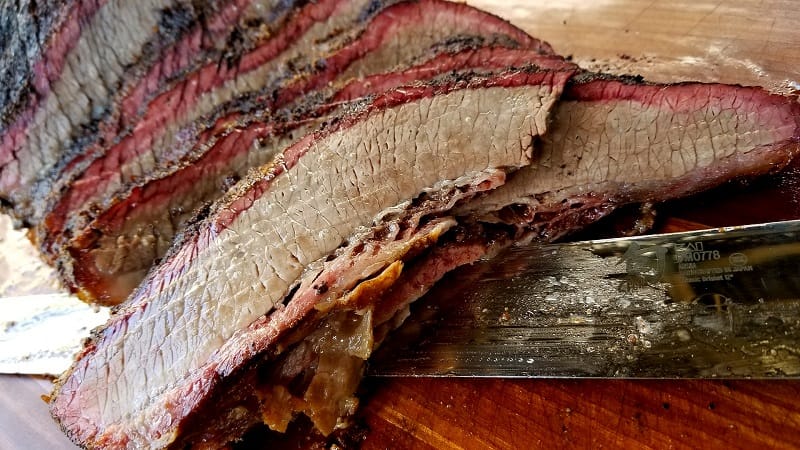
Maintaining a consistent temperature while cooking brisket is crucial for achieving the best results. As a seasoned pitmaster, I have learned that temperature control is the key to cooking the perfect brisket. I will explain why maintaining a consistent temperature is so important and provide some tips.
First and foremost, a consistent temperature allows for even cooking. Brisket is a thick piece of meat, and cooking it at a fluctuating temperature can result in uneven cooking. Some parts of the brisket may become overcooked, while others may be undercooked, leading to a tough and chewy texture. Maintaining a consistent temperature ensures that the brisket cooks evenly, resulting in tender and juicy meat.
Another reason why a consistent temperature is important is that it allows for the proper breakdown of collagen in the meat. Brisket is a tough cut of meat that contains a lot of collagen. The collagen must break down slowly to create a tender and flavorful brisket. Cooking at a consistent temperature ensures the meat is cooked slowly and evenly, allowing the collagen to break down properly.
Maintaining a consistent temperature also helps to prevent the brisket from drying out. The meat can cook too quickly when the temperature fluctuates, causing it to dry out. Keeping the temperature steady ensures the brisket stays moist and juicy throughout the cooking process.
When To Insert The Probe?
When it comes to cooking brisket, one of the most important steps is knowing when to insert the probe. I’ve learned that getting this step right can make or break your brisket.
First and foremost, it’s important to note that the ideal temperature to cook brisket is around 225-250°F. This low-and-slow approach allows the meat to become tender and juicy while also developing that coveted bark on the outside.
So, when should you insert the probe? Well, it depends on a few factors. First, consider the size of your brisket. If you’re cooking a smaller brisket, you may want to wait until the meat has been cooking for a few hours before inserting the probe. This will give the brisket time to develop a crust on the outside, which will help prevent moisture loss when you insert the probe.
On the other hand, if you’re cooking a larger brisket (say, 12-16 pounds), you may want to insert the probe earlier in the cooking process. This is because larger cuts of meat take longer to cook, so you’ll want to monitor the internal temperature from the get-go.
Another factor to consider is the smoker or grill you’re using. If you’re cooking on a pellet grill or electric smoker, you may want to insert the probe earlier in the cooking process, as these types of smokers tend to cook more evenly than traditional offset smokers.
So, when you decide to insert the probe, be sure to do so in the thickest part of the brisket, away from any bones or fat. This will give you the most accurate reading of the meat’s internal temperature.
Where To Probe Brisket?
When cooking brisket, the best place to probe the meat is the thickest part of the flat muscle. This area is where the two muscles meet, and it will provide an accurate reading of the brisket’s internal temperature. It is important to insert the thermometer horizontally and straight into the side of the flat muscle, not at an angle. By probing in this location, the cook can ensure that they are measuring the densest part of the meat and avoiding any pockets of fat that could skew the temperature reading. For best results, the cook can leave the thermometer in place for the entire cooking process rather than repeatedly probing the meat. With this method, the cook can ensure that their brisket is always cooked to perfection.
Where To Probethe Flat?
When it comes to cooking brisket, knowing where to insert the meat probe is key to achieving a perfectly cooked result. The best place to probe the brisket is in the thickest part of the flat muscle, where the two muscles meet. This area is located right in the middle of the densest part of the flat. One should insert the thermometer horizontally and angle it across the meat grain, avoiding fat pockets. This ensures an accurate temperature reading and helps to prevent overcooking or undercooking. By probing the brisket in the correct spot, it is possible to achieve a tender and flavorful result that is sure to impress any barbecue enthusiast.
Where To Probe the Point?
The point muscle is located at the back of the brisket and tends to cook quicker than the flat muscle. Therefore, it’s crucial to probe the point to ensure it reaches the right temperature without overcooking. To probe the point, insert the thermometer at the thickest part of the muscle to avoid any fat pockets. It’s also essential to insert the thermometer straight into the meat rather than at an angle to get an accurate reading.
Where To Probe for Tenderness?
The best place to probe a brisket is in the middle of the densest part of the flat muscle. This occurs at the thickest point of the meat, away from the fat. It’s recommended to insert the thermometer horizontally and angle it across the thickest part of the flat. This will give you the most accurate reading for when the brisket is done. A temperature probe you can leave during the entire cook is also recommended, making it easier to get that pitmaster-worthy brisket. Remember, if you want accuracy, probe in the flat!
Should I Be Probing My Brisket At Different Points Throughout The Cooking Process?
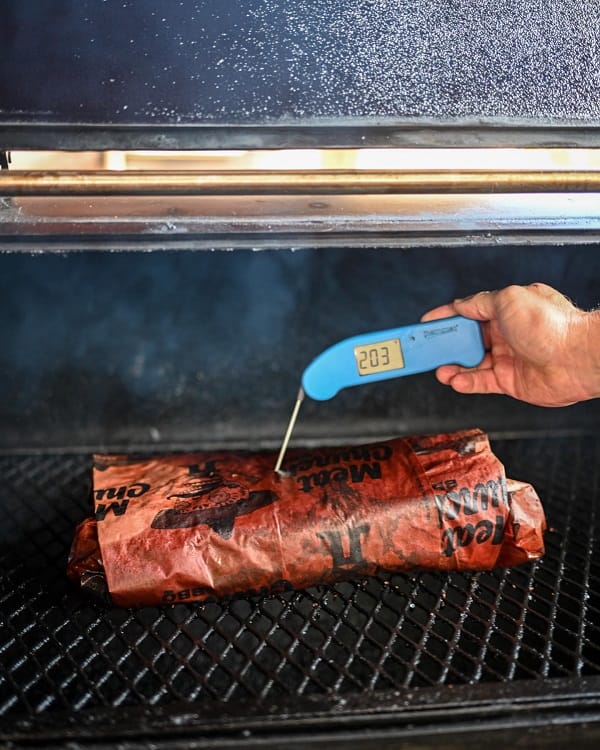
Creating a tender and juicy brisket that will have your taste buds dancing takes time, patience, and skill. Many ask whether they should be probing their brisket at different points throughout the cooking process. The answer is a resounding yes! Probing your brisket is an essential part of the cooking process. It allows you to monitor your brisket’s temperature and ensure it cooks evenly. When you probe your brisket, you check the internal temperature to see if it is at the right level of doneness. This is critical because brisket is a tough cut of meat that needs a long, slow cook time to break down the collagen and become tender.
So, when should you be probing your brisket? Ideally, it would help if you probed your brisket every hour during cooking. This will give you a good idea of how your brisket is cooking and whether you need to adjust the temperature or cooking time. Start probing your brisket after the first hour of cooking and continue doing so every hour until it reaches the desired internal temperature.
When probing your brisket, knowing what you’re looking for is essential. You want to insert the probe into the thickest part of the brisket, making sure that you’re not touching any bones or fat. You can also probe the thinner parts of the brisket, such as the point or flat, to see if they are cooking at the same rate as the thickest part.
So, what temperature should you be looking for when you probe your brisket? The ideal internal temperature for brisket is around 195-205°F. The collagen has broken down at this temperature, and the meat is tender and juicy. However, some people prefer a firmer texture, while others prefer a more fall-apart texture. It’s essential to know your preference and probe your brisket accordingly.
Read more:
How Deep Should The Brisket Probe Be Inserted For Accurate Temperature Measurement?
Inserting a probe thermometer into the meat is an easy and effective way. For the most accurate temperature reading, inserting the probe into the center of the thickest part of the flat is recommended. The thickness of the meat will determine how deep the probe should be inserted, but typically it should go in about half an inch. It’s important to angle the probe across the grain and insert it from the side, not the top. By following these simple steps, anyone can achieve a perfectly cooked brisket.
Should The Meat Probe Be Inserted Horizontally Or Vertically Into The Brisket?
There’s debate over whether the probe should be inserted horizontally or vertically into the brisket. The best way to do it is by pushing it horizontally and across the grain and NEVER inserting it from the top. The ideal location for the probe is in the middle of the densest part of the flat, inserted horizontally and angled across the grain.
Improperly inserting the probe can result in inaccurate readings, frustrating and potentially dangerous if the meat isn’t cooked thoroughly. To avoid this, it’s always best to insert the thermometer horizontally into the brisket flat.
What Is The Ideal Temperature Range For A Brisket When Cooking Low And Slow?
If you want to cook the perfect brisket, then you need to get the temperature just right. The ideal range for cooking a brisket low and slow is between 225°F (about 107°C) and 275°F (about 135°C). This allows the meat to cook slowly, resulting in a tender and juicy final product. However, it is important to avoid temperatures between 40° and 140° (4°C and 60°C) to ensure safety.
When smoking a brisket, most experts recommend cooking until the internal temperature reaches between 190°F and 210°F (about 88°C to 99°C). The ideal temperature for a properly smoked brisket is about 195°F (91°C), although the temperature can continue to rise even after it has been removed from the heat. Cooking a brisket low and slow takes time, but the result is worth the wait!
How Many Times Should I Probe My Brisket While Cooking?
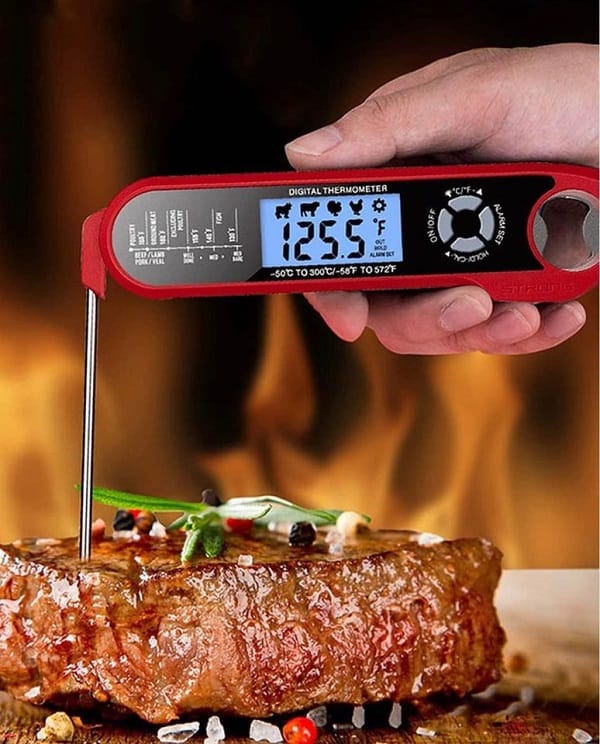
A common question that many pitmasters ask is how many times they should probe their brisket while cooking. According to factual data, it is recommended to start checking the temperature and probing the brisket after cooking for at least three hours. However, it is important to note that one probe is usually sufficient, as repeated probing can cause the meat to lose its juices and become dry.
The best place to insert the meat probe is in the center of the thickest part of the flat. Once the internal temperature hits about 190°F, the brisket is close to being ready. A final probe at an internal temperature of 203°F will ensure the meat is fork-tender and ready to serve. So, while it may be tempting to probe the brisket multiple times, it is best to keep it to a minimum to preserve the juicy, delicious flavor.
How Do You Know When A Brisket Is Properly Cooked?
How do you know when a brisket is properly cooked? Here are a few tips from my personal experience:
First, use a meat thermometer. This is the most reliable way to determine if your brisket is cooked to the right temperature. The ideal temperature for a fully cooked brisket is 195-205°F (90-96°C). However, keep in mind that brisket is a tough cut of meat, so it’s okay if it’s slightly under or overcooked.
Next, check the texture of your brisket. The meat should be tender and easy to pull apart with a fork when properly cooked. It needs more time on the grill if it’s still tough and chewy. Conversely, if it’s falling apart, it may be overcooked.
Another sign that your brisket is cooked correctly is the color of the meat. When the brisket is cooked to perfection, it should have a deep, rich color and a nice crust on the outside. If the meat is still pink or gray, it needs more time on the grill.
Finally, trust your instincts. Cooking a brisket can be an art; sometimes, you must rely on your gut feeling. If you think it needs more time, give it more time. If you think it’s done, take it off the grill and let it rest before slicing and serving.
What Are The Consequences Of Under Or Over-Probing Brisket?
One of the biggest mistakes many people make is under or over-probing their brisket. It may not seem like a big deal, but it can have serious consequences. When you under-probe your brisket, you’re cooking blind. You’re not able to get an accurate temperature reading, and you’re not able to tell when the meat is done. This can lead to an uneven cook, with some parts of the brisket being overcooked and dry and others being undercooked and tough.
On the other hand, over-probing your brisket can also have negative consequences. When you probe the meat too often, you’re releasing precious juices that help keep the meat moist and tender. This can lead to a dry, tough brisket that’s not very enjoyable to eat.
Ultimately, the consequences of under or over-probing your brisket can be severe. It can ruin the texture and flavor of the meat and leave you with a less-than-stellar barbecue experience. But with a little bit of practice and patience, you can learn to avoid these common mistakes and produce a perfectly cooked brisket every time.
What Factors Can Affect The Temperature Readings Of A Brisket?
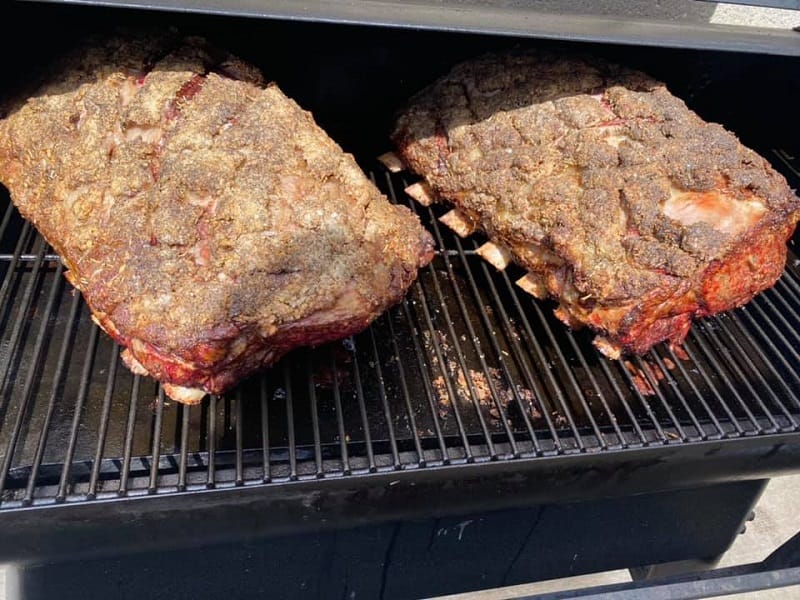
I’ve spent countless hours perfecting my brisket recipe as a barbecue enthusiast. But one thing that always seems to throw a wrench in my plans is the temperature readings. Even when I think I’ve done everything right, sometimes the temperature doesn’t match what I expect. After extensive research and experimentation, I’ve learned that several factors can affect the temperature readings of a brisket. Here are a few of the most important ones to keep in mind:
- Meat Thickness: The thickness of your brisket can significantly affect the temperature readings. Thinner cuts will cook faster and reach their target temperature sooner, while thicker cuts will take longer. It’s important to consider this when planning your cooking time and temperature.
- Cooking Method: Different cooking methods can also affect the temperature readings of your brisket. For example, cooking low and slow will take longer but can result in more even cooking, while cooking at a higher temperature can lead to more variation in temperature readings.
- Grill/Smoker Temperature: Your grill or smoker temperature can greatly impact the temperature readings of your brisket. If your grill is too hot or cold, it can throw off the readings and make it difficult to achieve the desired level of doneness.
- Probe Placement: The placement of your thermometer probe can also affect the temperature readings. Placing the probe too close to the bone or in a fatty area can result in inaccurate readings. It’s important to find the right spot to ensure accurate temperature readings.
- Resting Time: Finally, the resting time of your brisket can also impact the temperature readings. If you don’t let the brisket rest for long enough, the temperature can continue to rise, resulting in the overcooked meat.
Common Mistakes Can One Make When Probing A Brisket For Temperature
Even with experience, mistakes can still be made when probing a brisket for temperature. Here are some common mistakes that I’ve made and seen others make:
1. Probing in the wrong spot: The temperature of the brisket can vary depending on where you probe it. The thickest part of the brisket, or the “point,” is usually the last part to reach the desired temperature. So, if you’re only probing the thinner “flat” part, you might think the brisket is done when it’s not. Make sure to probe in multiple spots to ensure an accurate reading.
2. Not waiting for the temperature to stabilize: When you first stick the thermometer into the brisket, the temperature will likely fluctuate rapidly. It’s important to wait for the temperature to stabilize before taking a reading. Depending on the thickness of the brisket, this can take a few seconds or even a minute.
3. Probing too shallow: If you only stick the thermometer in a little bit, you might not get an accurate internal temperature reading. Make sure to insert the probe deep enough to be in the thickest part of the meat.
4. Probing too often: It’s tempting to keep checking the temperature every few minutes, but this can prolong the cooking process and cause the brisket to dry out. Stick to checking the temperature every 30 minutes, and trust the process.
5. Forgetting to calibrate your thermometer: Even the most high-tech thermometers can be off by a few degrees. Before you start cooking, make sure to calibrate your thermometer to ensure it’s reading accurately.
FAQs About Where To Probe Brisket
What Is The Difference Between Probing Brisket For Tenderness And Checking It For Doneness?
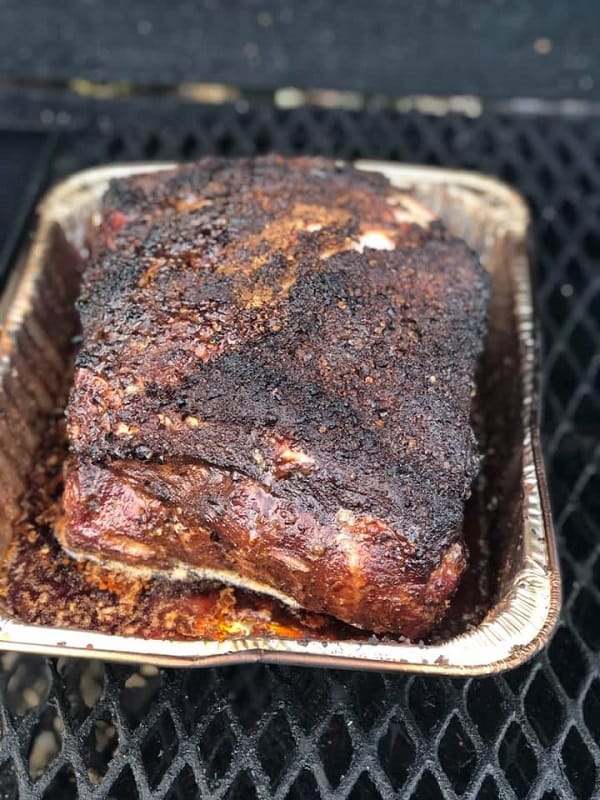
When it comes to cooking brisket, there are a few different methods to determine if the meat is done cooking. One way is to check the meat’s internal temperature with a thermometer, but another technique is to use a fork or similar tool to probe the brisket for tenderness. It takes practice to know the difference between fully cooked meat and meat that has achieved the perfect level of tenderness. Checking for tenderness involves feeling resistance when probing the meat. The goal is to reach a point where the meat is tender but not falling apart. While there is no magic temperature for brisket doneness, a range of temperatures is typically used as a guide.
Can I Rely On The “Poke Test” Alone To Determine If My Brisket Is Done?
While temperature is one factor to consider, relying on it alone may not accurately indicate readiness. The “poke test” is another method that can be used to determine brisket tenderness. By using a probe to test the softness of the meat in the thickest part of the flat, cooks can determine if the brisket is probe tender.
However, it’s important to note that the “poke test” should not be used as the sole indicator of readiness. Other methods, such as the bend test, must also be considered in determining if the brisket is fully cooked. Ultimately, combining techniques can lead to the most accurate determination of when a brisket is truly ready to be served.
How To Tell When Brisket Is Tender?
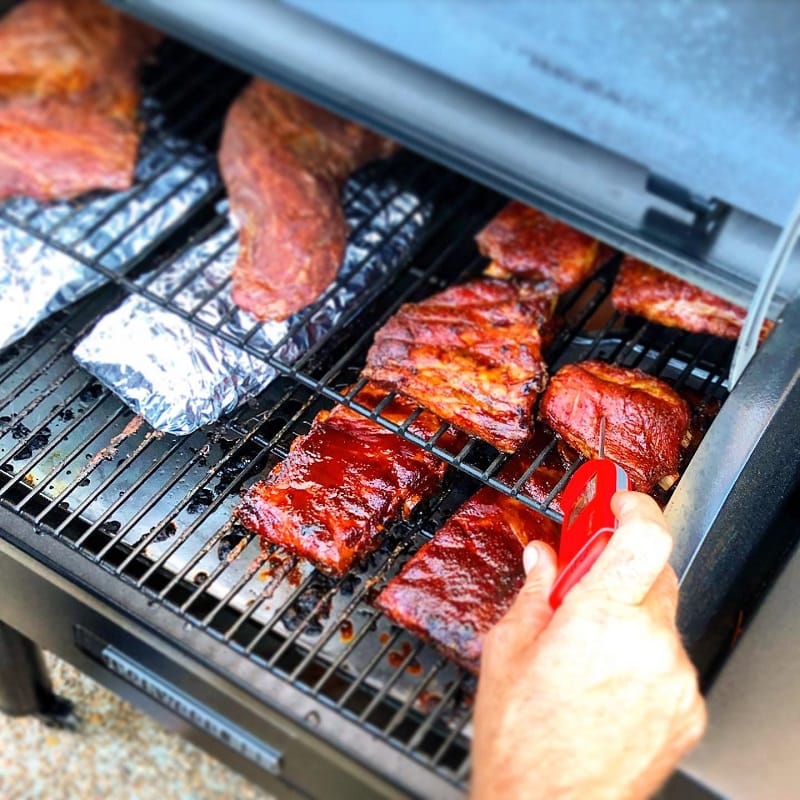
One of the easiest ways to do so is by performing the feel test. You only need to lift the cooked meat by putting your hands under it. If you get no resistance, your brisket is done. However, be sure not to overdo this test.
Another way to check the tenderness is by poking the brisket with a knife. If it slices through the meat easily, it is perfectly cooked. When the brisket’s internal temperature reaches 190-195 degrees Fahrenheit, it is fully cooked. If you’re still unsure, try using an instant-read thermometer to check the thickest part of the meat. Remember, the perfect brisket is tender but not so tender that it falls apart.
Conclusion
In conclusion, knowing where to probe brisket is crucial in achieving a perfectly cooked brisket. The thickest part of the meat, typically the pointed end, is the most reliable place to prove it. Avoid any bones or fatty areas that could give an incorrect reading. Aim for an internal temperature of 195-205°F, but also pay attention to the tenderness and juiciness of the meat. Cooking the brisket low and slow and letting it rest before slicing it into it are also essential steps in achieving a delicious brisket. With these tips and some practice, you’ll be a brisket pro in no time.
References:

Hey readers! Chip Holland here, and I’m a Manager of this website. My passion for writing about it only matches my passion for BBQ. Follow my blog for mouth-watering recipes, tips, and tricks for the perfect smoke, grill, and BBQ. I’m sure you won’t be disappointed!
